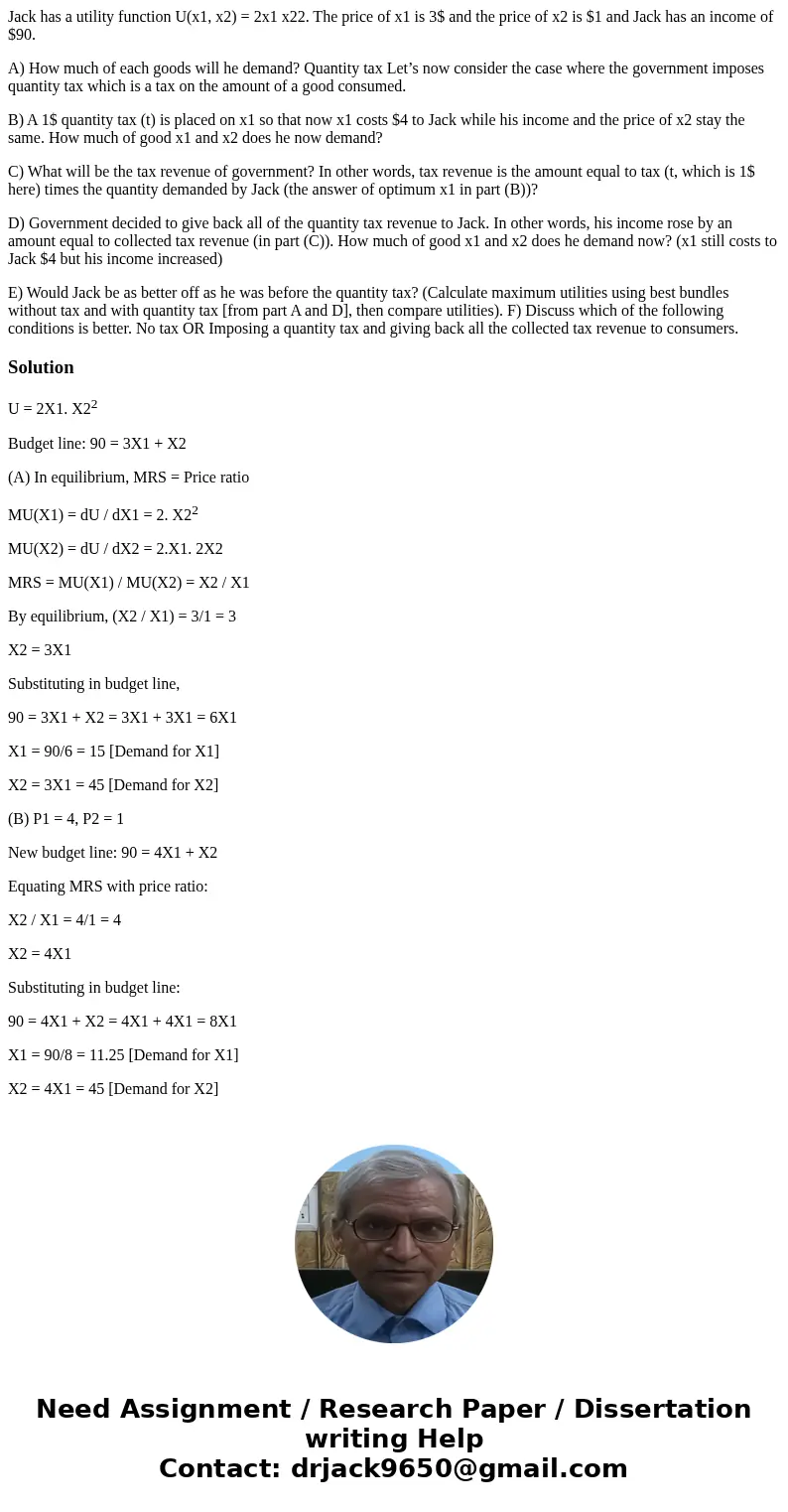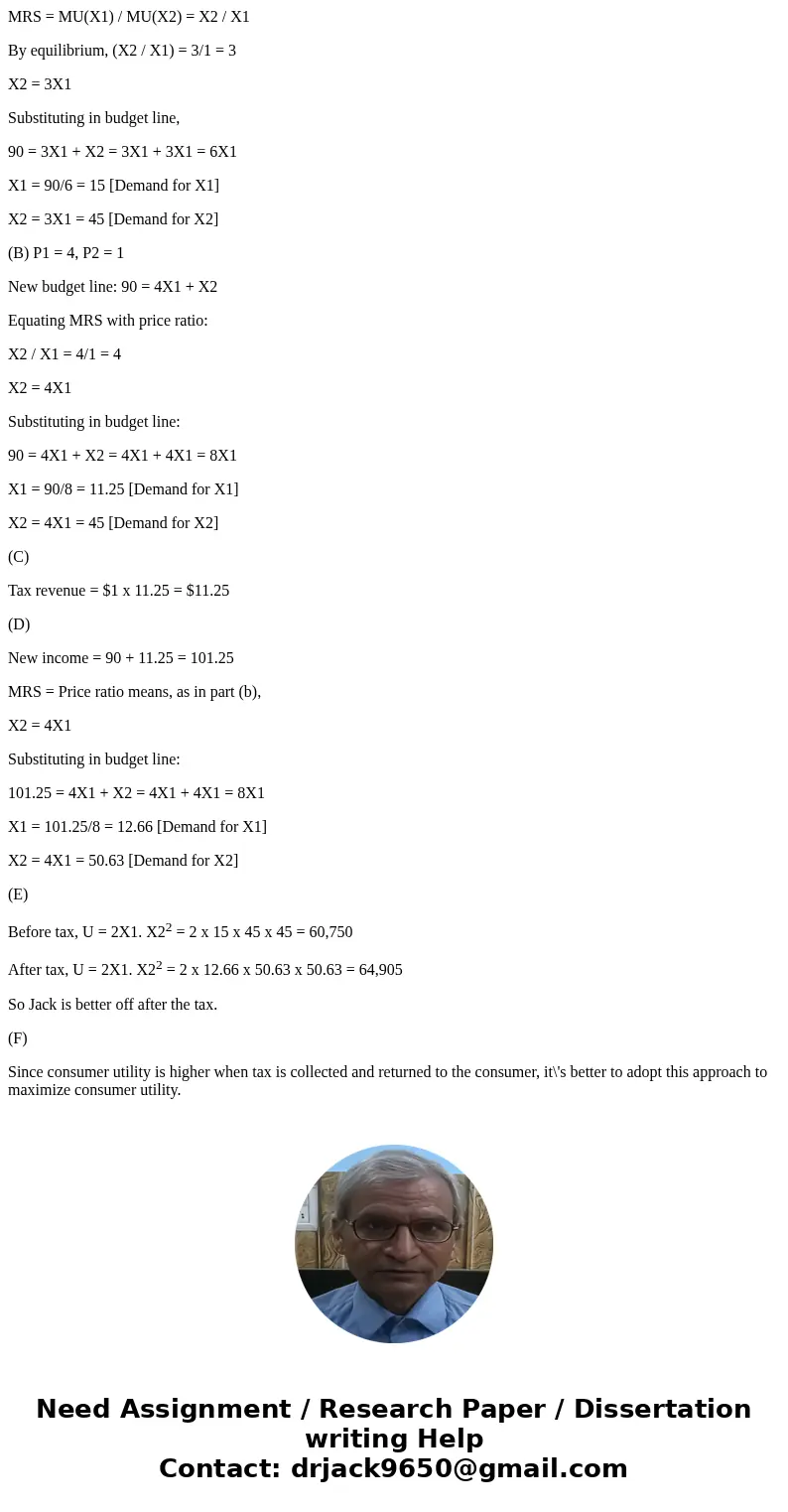Jack has a utility function Ux1 x2 2x1 x22 The price of x1
Jack has a utility function U(x1, x2) = 2x1 x22. The price of x1 is 3$ and the price of x2 is $1 and Jack has an income of $90.
A) How much of each goods will he demand? Quantity tax Let’s now consider the case where the government imposes quantity tax which is a tax on the amount of a good consumed.
B) A 1$ quantity tax (t) is placed on x1 so that now x1 costs $4 to Jack while his income and the price of x2 stay the same. How much of good x1 and x2 does he now demand?
C) What will be the tax revenue of government? In other words, tax revenue is the amount equal to tax (t, which is 1$ here) times the quantity demanded by Jack (the answer of optimum x1 in part (B))?
D) Government decided to give back all of the quantity tax revenue to Jack. In other words, his income rose by an amount equal to collected tax revenue (in part (C)). How much of good x1 and x2 does he demand now? (x1 still costs to Jack $4 but his income increased)
E) Would Jack be as better off as he was before the quantity tax? (Calculate maximum utilities using best bundles without tax and with quantity tax [from part A and D], then compare utilities). F) Discuss which of the following conditions is better. No tax OR Imposing a quantity tax and giving back all the collected tax revenue to consumers.
Solution
U = 2X1. X22
Budget line: 90 = 3X1 + X2
(A) In equilibrium, MRS = Price ratio
MU(X1) = dU / dX1 = 2. X22
MU(X2) = dU / dX2 = 2.X1. 2X2
MRS = MU(X1) / MU(X2) = X2 / X1
By equilibrium, (X2 / X1) = 3/1 = 3
X2 = 3X1
Substituting in budget line,
90 = 3X1 + X2 = 3X1 + 3X1 = 6X1
X1 = 90/6 = 15 [Demand for X1]
X2 = 3X1 = 45 [Demand for X2]
(B) P1 = 4, P2 = 1
New budget line: 90 = 4X1 + X2
Equating MRS with price ratio:
X2 / X1 = 4/1 = 4
X2 = 4X1
Substituting in budget line:
90 = 4X1 + X2 = 4X1 + 4X1 = 8X1
X1 = 90/8 = 11.25 [Demand for X1]
X2 = 4X1 = 45 [Demand for X2]
(C)
Tax revenue = $1 x 11.25 = $11.25
(D)
New income = 90 + 11.25 = 101.25
MRS = Price ratio means, as in part (b),
X2 = 4X1
Substituting in budget line:
101.25 = 4X1 + X2 = 4X1 + 4X1 = 8X1
X1 = 101.25/8 = 12.66 [Demand for X1]
X2 = 4X1 = 50.63 [Demand for X2]
(E)
Before tax, U = 2X1. X22 = 2 x 15 x 45 x 45 = 60,750
After tax, U = 2X1. X22 = 2 x 12.66 x 50.63 x 50.63 = 64,905
So Jack is better off after the tax.
(F)
Since consumer utility is higher when tax is collected and returned to the consumer, it\'s better to adopt this approach to maximize consumer utility.


 Homework Sourse
Homework Sourse